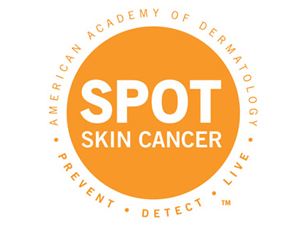The American Academy of Dermatology, the medical association helping to lead the fight against skin cancer, has a new public service ad on the airwaves. It features a group of middle-aged men on the links, trying as they might to avoid hazards like sandtraps, trees and, yes, geese – and failing.
The goal of the ad is simple: To remind golfers – men in particular – that a bright, sunny day on the course may be increasing their risk of developing skin cancer. After all, men ages 50 and older are at the highest risk from this disease. And, consider these other facts provided by the AAD:
- When outside in the sun, fewer than one-third of men (29 percent) surveyed by the Academy say they “always” protect their skin, compared with women;
- A significantly larger percentage of men (39 percent) than women (28 percent) agreed that they prefer to enjoy sunshine and not worry about what they should do to protect their skin;
- Less than half of men (46 percent) indicated they knew how to examine their skin for signs of skin cancer compared with a majority (59 percent) of women.
- Use sunscreen. Specifically, sunscreens that offer broad-spectrum protection – that is, against UVA and UVB rays – and that offer an SPF of 30 or higher. Apply it before getting out on the course. Dr. Susan Taylor of the AAD recommends that you use a shotglass worth of sunscreen and that you re-apply every two hours or so. (And surely there’s room in that duffel bag of yours for an extra bottle of sunscreen.)
- Consider wearing sun-protective clothing. Sure, a baseball cap is probably part of your regular golf attire. But, try wearing apparel that is also UV-resistant. And remember that clothing alone is not always enough to protect you from the harmful effects of the sun – be sure to use sunscreen as well.
- If you see a spot, say something. Chances are you’ve been golfing with your buddies for a while. So you know if something’s not quite right. And we’re not just talking about your buddy’s golf game: if you see a suspicious-looking spot on their skin, whether it’s on the back of their necks, their arm, their wrists or anywhere else, point it out and suggest they get it checked. “Unlike other types of cancer that can’t be seen by the naked eye, skin cancer shows obvious signs on the surface of the skin that can be easily detected by properly examining it,” says the AAD president, Dr. Dan Siegel.
Copyright © 2023 United States Golf Teachers Federation, All Rights Reserved
200 S. Indian River Drive, Suite #206, Fort Pierce, FL 34950
772-88-USGTF or 772-595-6490 - www.usgtf.com
200 S. Indian River Drive, Suite #206, Fort Pierce, FL 34950
772-88-USGTF or 772-595-6490 - www.usgtf.com

